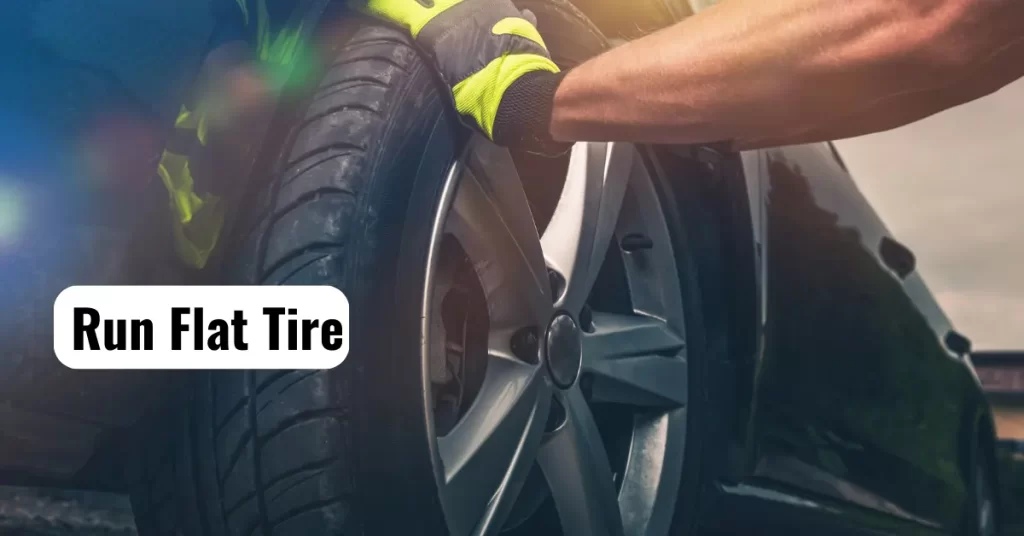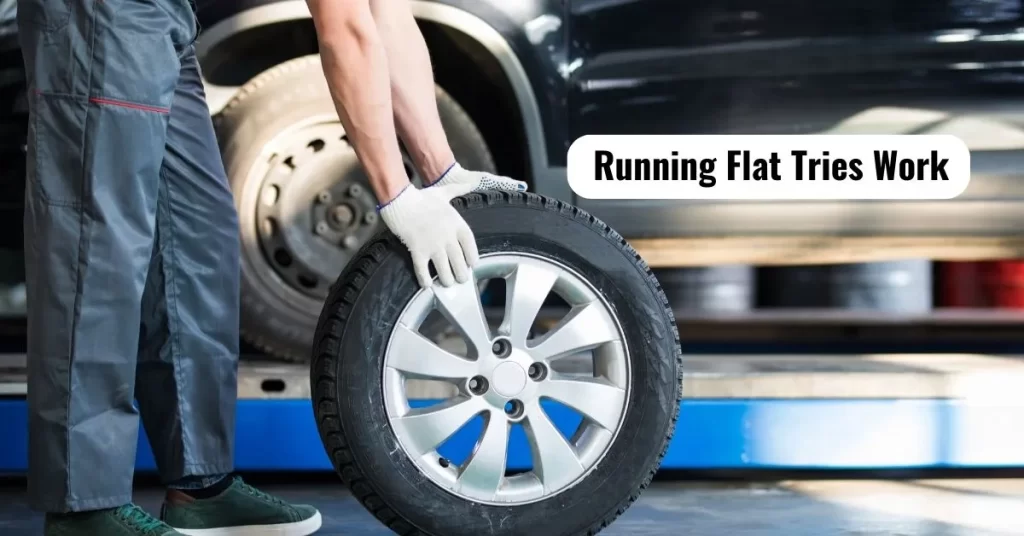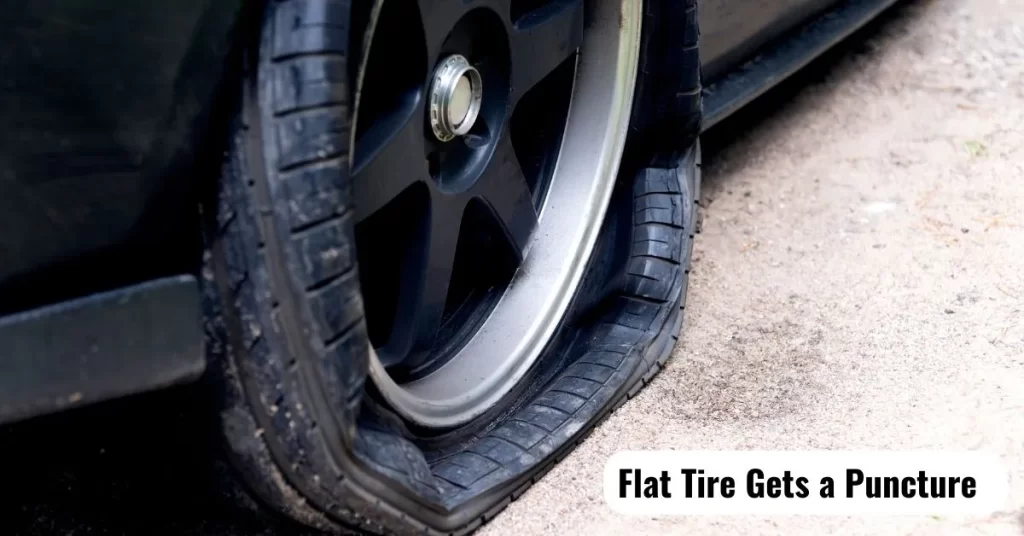How Far Can I Drive On A Run Flat Tire?-50 Miles Truth
Run-flat tires are a lifesaver when it comes to flat tires. Instead of changing the tire immediately, run-flats allow you to drive on them even when flat, making it much easier and less troublesome than changing the tire in an emergency. Generally, most run-flat tires will allow you to drive up to 80km (50 miles) at speeds of up to 89 kph (55 mph). However, you should exercise caution as driving on a run-flat tire too long or too fast can damage the tire/wheel or potentially cause an accident.
If you experience a flat tire while driving on a run-flat, you must remain aware of your speed and distance traveled. Taking frequent breaks while driving is recommended to reduce fatigue and ensure safety on the road. You must also check the tire pressure often and replace the run-flat if needed as soon as possible so that you can stay safe and not risk any further damage from your old tires. Read on to learn more in detail.
Table of Contents
What is a Run Flat Tire?

Run flat tires are tires with firm sidewalls. They are built with safety in mind as the firm sidewalls allow the tire to keep operating even once all the air is out. This makes it easy for the driver to control the vehicle and continue driving for a limited time. While the conventional car requires air to stay hard, the run-flat tire can stay rigid without air pressure.
Run flat tires are made from the same rubber compounds as conventional tires, giving them the same durability and lasting power. However, run-flat tires have reinforced compounds within the sidewall, which give them more edge to run even when the air is out.
How will you know if you have a flat tire with run-flat tires?
While run-flat tires are designed to allow you to continue driving for a limited distance even after a puncture, it’s still crucial to identify a flat tire to avoid further damage or potential safety risks. Here’s how you can determine if you have a flat tire with run-flat tires:
- Tire Pressure Monitoring System (TPMS): Many modern vehicles, including those equipped with run-flat tires, come with a Tire Pressure Monitoring System. If a run-flat tire loses pressure due to a puncture or damage, the TPMS will typically illuminate a warning light on your dashboard, indicating low tire pressure. This serves as an initial alert to check your tires.
- Vibration and Handling Changes: If you experience increased vibration or notice changes in your vehicle’s handling, such as steering pulling to one side, the car feeling unsteady, or vibrations in the steering wheel or seat, it could indicate a flat or significantly deflated tire. This is a sign to slow down and assess the situation safely.
- Visual Inspection: If you suspect a flat tire, find a safe spot to stop your vehicle and visually inspect the tires. Look for any visible damage, punctures, or deflation. Run-flat tires might not look drastically different when slightly deflated, but if one tire appears significantly flatter than the others, it’s a strong indication of a flat.
- Audible Sounds: A flat tire might sometimes produce unusual sounds as it contacts the road surface differently. Listen for any unusual thumping or flapping noises while driving, indicating a flat tire.
- Physical Sensation: You might feel a flat tire through the vehicle’s steering wheel or the way the car drives. If you notice the steering feeling heavier or more difficult, it could be due to a flat tire.
- Loss of Power and Speed: Some run-flat tires are designed to allow you to continue driving at a reduced speed after a puncture. If your vehicle’s performance seems limited, it could be due to a flat tire.
Remember that run-flat tires provide limited driving capabilities after a puncture, typically allowing you to drive for a certain distance at reduced speeds. It’s important to consult your vehicle’s manual to understand the specific capabilities of your run-flat tires and to prioritize safety by finding a suitable place to stop and address the issue promptly. If you’re unsure whether you have a flat tire, it’s recommended to pull over to a safe location and inspect your tires visually.
Can I drive 100 miles on a run-flat tire?
The distance you can safely drive on a run-flat tire after it’s been punctured or damaged depends on several factors, including the severity of the damage, the type of run-flat tire, and your driving speed. Run-flat tires are designed to allow you to continue driving for a limited distance even after a puncture, but it’s important to exercise caution and adhere to manufacturer guidelines.
Some run-flat tires are rated to provide a range of around 50 to 100 miles at a reduced speed (usually up to 50 mph) after being punctured. However, this range can vary. It’s crucial to consult your vehicle’s manual and the tire manufacturer’s specifications to determine the specific capabilities of your run-flat tires.
Driving on a run-flat tire beyond its recommended distance or at high speeds can lead to further damage, compromised handling, and potentially unsafe driving conditions. Therefore, if you suspect that you have a punctured run-flat tire, it’s advisable to find a safe place to stop as soon as possible, assess the tire’s condition, and consult a professional if needed. Always prioritize your safety and the safety of others on the road.
How Far Can I Drive On A Run Flat Tire?
When you have limited mobility and have lost full pressure, you can drive your run-flat tire for 50 miles at a maximum speed of 50 miles per hour. You must know that this distance depends a great deal on weather, vehicle load, road type, speed, and driving pattern of the driver.
To find out exactly what your run flat tires’ maximum drivable distance and speed is, check the information on the tire sidewall or speak to tire professionals to advise you further. Avoiding driving over the maximum permitted speed and distance specified for your run-flat tire. This will also minimize the risk to other road users and the risk of being issued with a fine and/or penalty points.
The Benefits of Run Flat Tries:
- Continued Mobility: The primary advantage of run-flat tires is that they allow you to continue driving even after a tire has lost pressure or gone flat. This means you can safely reach your destination or a nearby service station without the need for immediate tire changes or roadside assistance.
- Safety and Convenience: Run-flat tires provide an added layer of safety by reducing the risk of sudden tire failures, such as blowouts, which can lead to loss of control and accidents. They allow you to maintain better control and stability of the vehicle, even with a flat tire, which can be crucial in emergencies.
- Elimination of Spare Tire: Run-flat tires eliminate the need for carrying a spare tire in your vehicle. Spare tires take up space, add weight to the vehicle, and require additional maintenance. With run-flat tires, you can free up trunk space and avoid the hassle of changing a tire on the side of the road.
- Extended Driving Range: While run-flat tires are not intended for prolonged driving in a flat condition, they typically allow you to travel a limited distance at reduced speeds after a puncture or loss of tire pressure. This feature allows you to reach a safe location or service center without needing an immediate tire change.
- Tire Pressure Monitoring System (TPMS) Integration: Run-flat tires are often designed to work with a Tire Pressure Monitoring System. The TPMS continuously monitors tire pressure and alerts you if there is a significant pressure loss, allowing you to take appropriate action before a tire goes completely flat.
The Denger of Run Flat Tries:
- Loss of Control: When a tire goes flat, it significantly affects the handling and control of the vehicle. A flat tire can cause the vehicle to pull to one side, making it difficult to steer and maintain stability. This loss of control increases the risk of accidents, especially at higher speeds or during maneuvers.
- Tire Damage: Continuing to drive on a flat tire can cause severe damage to the tire itself. The sidewalls can become compromised, leading to bulges, cuts, or even a blowout. A damaged tire may require replacement, resulting in additional costs.
- Rim Damage: Running on a flat tire puts excessive stress on the wheel rim, which can cause it to deform or crack. Damaged rims may need to be repaired or replaced, which can be expensive.
- Limited Braking Capability: A flat tire reduces the vehicle’s braking performance. It takes longer to bring the vehicle to a stop, increasing the risk of collisions, especially in emergency braking situations.
How Do Running Flat Tries Work?

Run flat tires are innovative technology designed to allow a vehicle to continue operating with little or no air pressure. These special tires can hold up the weight of the vehicle, even when the tire has gone completely flat, eliminating the need for timely roadside assistance when dealing with a flat. There are two types of run-flat tires: self-supporting and support ring systems.
Self-supporting run-flat tires feature reinforced sidewalls that can support a car’s weight in cases of air loss. This lets drivers safely maintain their original speed settings while traveling up to the manufacturer’s distance specification after losing air pressure. The other type – support ring – utilizes hard rubber or another structure that can help maintain the tire shape in low-pressure conditions, so they also remain dependable in emergencies. All run-flat tires must be used in sync with a Tire Pressure Monitoring System (TPMS) to ensure you get warned immediately about your tire pressure levels.
What If My Run Flat Tire Gets a Puncture?

The best option is to replace your flat tire when it has been punctured. Although run-flat tires are designed to get you home or to the nearest garage, avoiding driving at high speed or for long distances is advised.
Although the quality of run flat tires varies with manufacturers as some flat tires can handle driving up to a maximum speed of 55mph. However, experts advise driving at a limited speed and no further than 50 miles.
Frequently Asked Questions [FAQs]
How far can you drive on a BMW run-flat tire?
Up to 50 miles. Almost all BMWs come with a standard run-flat tire, making it easy to drive on the flat for up to 50 miles.
Can you puncture run-flat tires?
Yes, you can puncture run-flat tires. That’s because their main aim is to prevent disasters when a puncture occurs and to prevent any unforeseen.
So, if you puncture your run-flat tire, the reinforced sidewalls will give you time to get to the garage or a safe place to get a new replacement.
What is the range on a run-flat tire?
There is no definite speed range to drive when running on your run flat tire, ensure to reduce your speed to a maximum of 50 mph. also do not drive on your run-flat tire for more than 50 miles.
Can I drive on a run-flat tire?
Yes, the reinforced sidewalls on run-flat make it usable even at 0 psi.
Why do run-flat tires run out so fast?
Run flat tires run out fast because of the soft tread compound used on the inside. They are also liable to blowouts which also tend to reduce their lifespan.
Conclusion
Run-flat tires are designed to provide the driver with a safe and limited driving range after a puncture or loss of tire pressure. The distance that can be traveled on a flat run-flat tire depends on the tire’s design, vehicle weight, and driving conditions—generally, replacing your run-flat tire after it has been driven on while flat is recommended. It is also important to check tire pressure regularly, monitor any warning indicators provided by your vehicle’s tire pressure monitoring system (TPMS), and follow proper maintenance procedures to ensure your run-flat tires’ safe and reliable performance.
